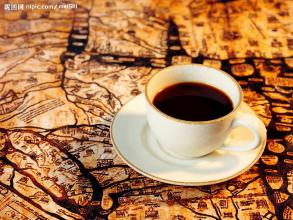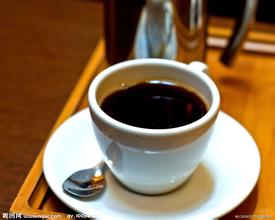Introduction to the price of Arabica coffee beans the characteristics of Arabica coffee beans
Arabica coffee trees grow between 900m and 2000 m above sea level; they are cold-resistant, and the suitable growth temperature is 15ml / 24m; they need more humidity, and the annual rainfall is not less than 1500 ml. At the same time, they also require higher cultivation techniques and conditions.
Arabica coffee beans are mainly grown in South America (except Argentina and parts of Brazil), Central American countries, Africa (Kenya, Ethiopia, mainly East Africa), Asia (including parts of Yemen, India and Papua New Guinea), and a small amount of Arabica coffee beans are also grown in Yunnan, Hainan and Taiwan in China. [1) A large shrub of the genus Arabica, having oval, dark green leaves and oval fruit, usually with two slightly flat beans, small and round on the front, narrow and S-shaped in the middle, and S-shaped on the back of the beans.
Arabica coffee tree
Arabica coffee tree
The arc is flatter. The caffeine content is about 1%. Among the coffee beans in the world, Arabica coffee accounts for about 65%, 80%. Its excellent flavor and aroma make it the only coffee that can be drunk directly and alone among these native species. However, its resistance to drying, frost, diseases and insect pests is low, especially to the biggest natural enemy of coffee-leaf rust, so all producing countries are committed to improving varieties. For example, Sri Lanka, as we all know, used to be one of the most famous coffee producers in the past, but coffee farms were not spared by leaf rust at the end of the 19th century. Since then, Sri Lanka has turned to black tea, and coffee made from Arabica beans, the same black tea kingdom in India, is of higher quality and tastes different than other commercially grown coffee varieties (such as Robusta). And the caffeine content of this kind of coffee is also low. The traditional processing method is to harvest coffee berries manually, peel them on the same day, and use manually selected coffee beans to be ground and boiled after baking. With fresh milk, do not use the general cream on the market, so the coffee is particularly smooth and rich. The specific features are:
1. The smell of fragrance is strong;
2. it's not easy to have a bitter taste.
3. The content of coffee oil is moderate;
4. High acidity
5. The caffeine content is 30% and 40% of that of Robusta.
Arabica-shape feature
Arabica flower
Arabica flower atlas
Arabica is a large shrub with oval, dark green leaves and oval fruit. Wild plants are generally 9-12 meters tall and have scattered branches. Leaves opposite, elliptic-ovate or long-ovate, 6-12 cm long, 4-8 cm wide, dark green. Flowers white, 10-15 mm in diam., axillary clustered.
The berries are oval, 10-15 mm in diameter, bright red to purple when ripe, there are generally two slightly flat beans, the bean body is small and round, the front is long oval, the middle crack is narrow and curved S-shaped, and the arc on the back of the beans is flatter, that is, the so-called "coffee beans". Caffeine content is about 1% Muay 1.7%.

Important Notice :
前街咖啡 FrontStreet Coffee has moved to new addredd:
FrontStreet Coffee Address: 315,Donghua East Road,GuangZhou
Tel:020 38364473
- Prev

An introduction to the Flavor of Coffee Manor in Indonesia Jintamani producing area of Kahayang Gan Manor
Sumatra Island, formerly known as Jindao and Jinzhou, is famous for its rich gold deposits. The topography of Sumatra is long and narrow. The topography of Sumatra is mainly from northwest to southeast of the island's Bali Mountains Barisan Mountains and the eastern lowlands. The mountains stretch, with more than 90 volcanoes and many volcanic lakes, volcanoes provide fertile soil suitable for coffee growth. For tropical rain forest climate
- Next

Indonesian Coffee Sumatra Coffee producing area introduces Indonesian Manning Coffee production in Rasuna Wahana Manor
In 1696, the then Governor of the Netherlands in Malabar, India, gave a batch of coffee seedlings to the Governor of the Netherlands in batavia in Batavia (present-day Jarkata in Jakarta). This was the first time that coffee was grown in Indonesia. However, the first batch of coffee seedlings were washed away by the flood. In 1699, Batavia accepted the gift again. This time, the coffee seedlings survived smoothly and ushered in the first harvest in 1701.
Related
- Does Rose Summer choose Blue, Green or Red? Detailed explanation of Rose Summer Coffee plots and Classification in Panamanian Jade Manor
- What is the difference between the origin, producing area, processing plant, cooperative and manor of coffee beans?
- How fine does the espresso powder fit? how to grind the espresso?
- Sca coffee roasting degree color card coffee roasting degree 8 roasting color values what do you mean?
- The practice of lattes: how to make lattes at home
- Introduction to Indonesian Fine Coffee beans-- Java Coffee producing area of Indonesian Arabica Coffee
- How much will the flavor of light and medium roasted rose summer be expressed? What baking level is rose summer suitable for?
- Introduction to the characteristics of washing, sun-drying or wet-planing coffee commonly used in Mantenin, Indonesia
- Price characteristics of Arabica Coffee Bean Starbucks introduction to Manning Coffee Bean Taste producing area Variety Manor
- What is the authentic Yega flavor? What are the flavor characteristics of the really excellent Yejasuffi coffee beans?

